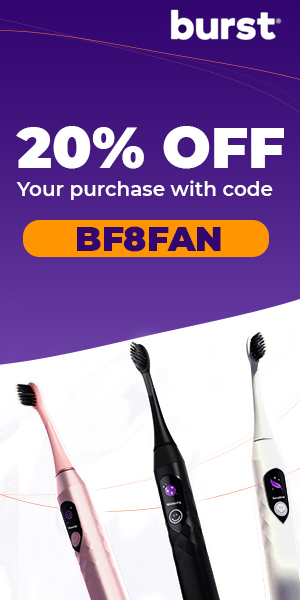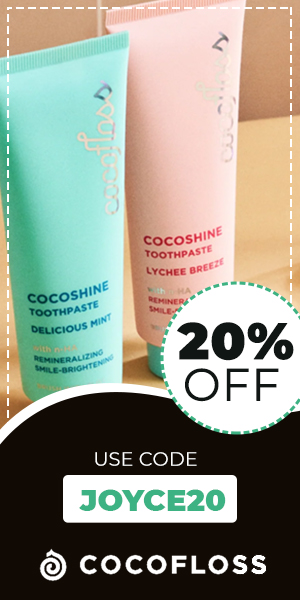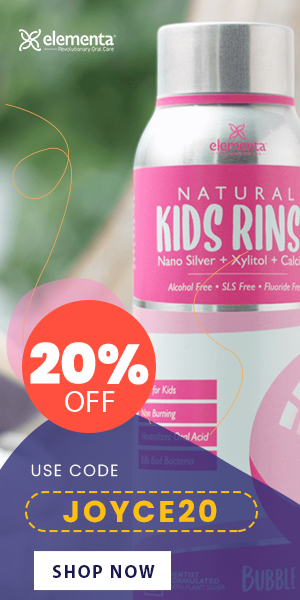My guide to choosing between these two popular cosmetic treatments
Joyce Highlights:
- Dental bonding is a tooth-colored composite resin that is quick, budget-friendly, and great for minor repairs
- Veneers are thin porcelain shells that are long-lasting and ideal for more noticeable cosmetic changes
- The right choice depends on your goals, budget, and how long you want results to last
Let’s Talk Dental Bonding
What is Dental Bonding?
Dental bonding is a cosmetic treatment that applies tooth-colored resin to fix chips, cracks, gaps, or stains. It’s shaped, hardened, and polished in under an hour for a natural look.
Dental bonding is one of my favorite quick fixes for a smile. Dentists use a tooth-colored composite resin to repair little imperfections like chips, cracks, small gaps, or discoloration.
The resin blends beautifully with your natural tooth. Most people can’t tell where the bonding ends and the real tooth begins.
The process is simple.
- Consultation to discuss your goals and confirm bonding is the right choice
- Choosing a resin shade that matches your tooth
- Preparing the surface so the resin adheres properly
- Applying and shaping the resin by hand
- Hardening with a curing light and polishing for a smooth, natural finish
Most bonding appointments take less than an hour per tooth. You leave with an instantly improved smile and no need for multiple visits.
For patients who want an affordable, same-day cosmetic change without anything permanent, dental bonding can be a fantastic choice.
Who Is a Candidate for Dental Bonding?

In my practice, I often recommend dental bonding for patients who want to fix small imperfections without major dental work. It’s a great option if you have:
- Minor chips or cracks in a tooth
- Small gaps between teeth
- Teeth that are slightly misshapen or shorter than you’d like
- Discoloration that doesn’t respond well to whitening treatments
Bonding works best when your overall teeth and gums are healthy. If you have larger damage, bite issues, or advanced decay, we might look at other treatments like veneers or crowns for a longer-lasting solution.
What Are the Benefits of Dental Bonding?
One of the reasons I love dental bonding is how much it can do with so little fuss. Some of the biggest benefits include:
- Minimally invasive, with little to no enamel removal
- Quick results in a single appointment
- More affordable than veneers or crowns
- May be covered by insurance when used for structural repair, not just cosmetic purposes
For many patients, bonding offers an instant confidence boost without the commitment or cost of more complex treatments.
Let’s Talk Dental Veneers
What Are Veneers?
Veneers are thin, custom-made porcelain shells that cover the front surface of your teeth. They’re designed to mimic natural enamel, matching its shape, texture, and even the way it reflects light.
I love using veneers when a patient wants a major smile transformation. They’re fully customized, so we can perfect everything from color to contour.
The beauty of veneers is that they not only look natural, but they can also correct chips, stains, small gaps, and slightly uneven teeth all at once. My goal is always to create a smile that looks like you, only better.
Here’s how the process usually works:
- Consultation to discuss your goals and design your ideal smile
- Light enamel preparation so the veneers fit seamlessly
- Impressions of your teeth to create your custom set
- Temporary veneers to protect your teeth while the permanent ones are made
- Permanent bonding of your veneers, typically within 1–4 weeks
Related: How Much Do Veneers Cost?
Veneers are perfect for patients who want a dramatic, long-lasting smile transformation, especially when whitening or bonding alone can’t achieve the desired results.
Who Is a Candidate for Veneers?
In my practice, I recommend veneers for patients who want a bigger change than bonding can provide. They’re ideal if you have:
- Larger chips or cracks
- Significant gaps between teeth
- Severe discoloration that whitening can’t fix
- Mild misalignment or uneven tooth shapes
Veneers work best when your teeth and gums are healthy, so I always start with a thorough exam to make sure they’re the right option for you.
Related: 7 Types of Veneers: Pros, Cons, and How to Choose
View this post on Instagram
What Are the Benefits of Veneers?
One of the reasons I recommend veneers for certain patients is the beautiful, long-lasting results they deliver.
Some of the biggest advantages include:
- Long-lasting results with proper care, often 10–15 years or more
- Highly resistant to stains from coffee, tea, or wine
- Fully customizable in shape and shade for your ideal smile
- More natural light reflection than bonding, giving a lifelike appearance
With veneers, you can enjoy a smile that not only looks stunning but also stands the test of time.
Related: Do People Regret Getting Veneers?
Key Differences Between Dental Bonding and Veneers
What’s the difference between dental bonding and veneers?
| Feature | Dental Bonding | Veneers |
|---|---|---|
| Procedure | One visit, no lab work | 2–3 visits, lab-made |
| Invasiveness | Minimal enamel removal | Some enamel removal |
| Durability | 3–7 years | 10–15 years |
| Cost | Lower | Higher |
| Best for | Small chips, slight discoloration | Bigger aesthetic changes, severe staining |
What’s the Right Choice for Me?
When I’m helping patients decide between bonding and veneers, I start by asking about their goals, budget, and timeline.
- Choose bonding if you want a quick, affordable fix for small chips, gaps, or discoloration, or a touch-up before a big event.
- Choose veneers if you’re looking for a longer-term, highly aesthetic solution that can transform multiple aspects of your smile at once.
- Always start with a dental exam. Sometimes your tooth’s health, bite, or existing dental work will make the decision for you.
Bonding is best if you want a quick, affordable fix for small chips, gaps, or stains, especially for a pre-event touch-up. It’s minimally invasive and can be done in one visit, but it doesn’t last as long. Research has shown that bonding materials may wear or discolor faster than porcelain, often needing touch-ups within a few years.
Veneers, on the other hand, are a longer-term solution. Porcelain veneers have survival rates of over 90% after 10 years, with proper care. They’re highly stain-resistant, hold their shape and color beautifully, and can correct multiple concerns at once. This makes them a strong choice if you’re looking for a big, lasting transformation.
View this post on Instagram
Of course, the right choice also depends on your oral health. Sometimes, your tooth’s condition, bite alignment, or existing dental work will make the decision for you.
That’s why I always start with a thorough exam before recommending either option.
Related: Cosmetic Dentist vs General Dentist
FAQs
Is teeth bonding better than veneers?
It depends on your needs. Bonding is faster and more affordable, while veneers last longer and often look more natural.
What are the disadvantages of dental bonding?
Bonding is less durable than veneers, can stain more easily, and may need touch-ups or replacement sooner.
Do dentists still do bonding?
Yes, bonding remains a popular, minimally invasive option for fixing minor cosmetic issues.
How much does dental bonding vs veneers cost?
Bonding costs about $300–$600 per tooth. Veneers range from $1,000–$2,500 per tooth.
How many times can a tooth be bonded?
A tooth can be bonded multiple times, but each repair may slightly reduce its overall strength.
What looks more natural, veneers or composite bonding?
Veneers. Porcelain reflects light like natural enamel and resists stains better.
Does bonding damage your teeth?
No, bonding requires little to no enamel removal, so it’s a conservative treatment.
Can veneers be removed?
No, once placed, veneers are permanent because a small amount of enamel is removed for a proper fit.
Do veneers hurt?
Most patients feel little to no discomfort. Local anesthetics can be used during enamel preparation.
How long does dental bonding last?
With good care, bonding lasts about 3–7 years before needing a touch-up or replacement.
How long do veneers last?
Porcelain veneers can last 10–15 years or longer with proper care and maintenance.
Key Takeaways
- Dental bonding is budget-friendly, can be done in a single visit, and is ideal for fixing small chips, gaps, or stains. It’s a great short-term solution, but it may need touch-ups every few years.
- Veneers are a bigger investment but last much longer, often 10–15 years, and deliver a high-end, natural look that resists stains and wear.
- The best choice depends on your budget, how long you want the results to last, and your cosmetic goals.
- Always start with a dental exam to make sure your teeth and gums are healthy enough for the option you choose.
- Both treatments can dramatically improve your smile; one offers quick and affordable results, the other offers a long-lasting transformation.
Follow @joycethedentist for more expert dental tips and smile inspiration.





















